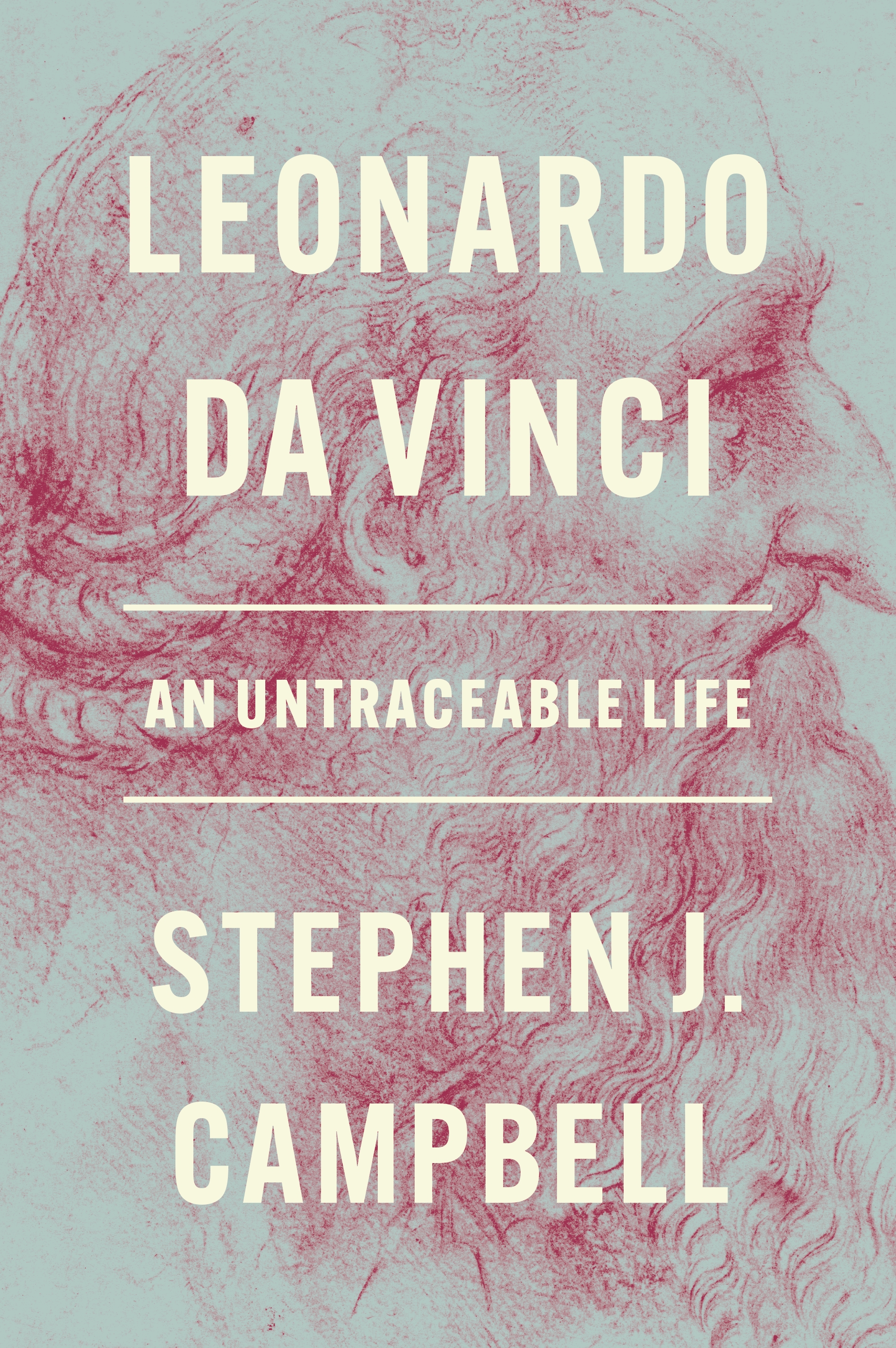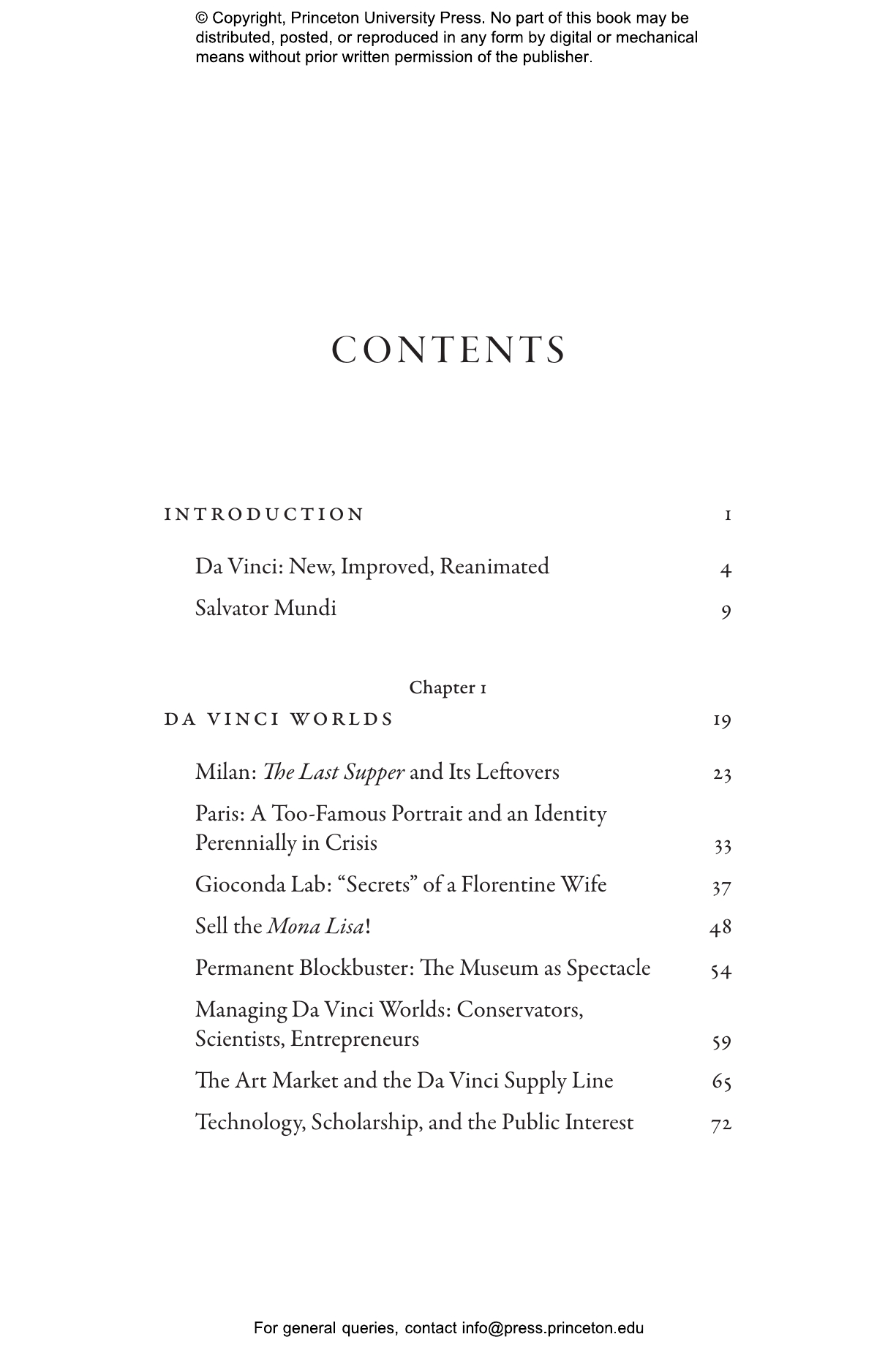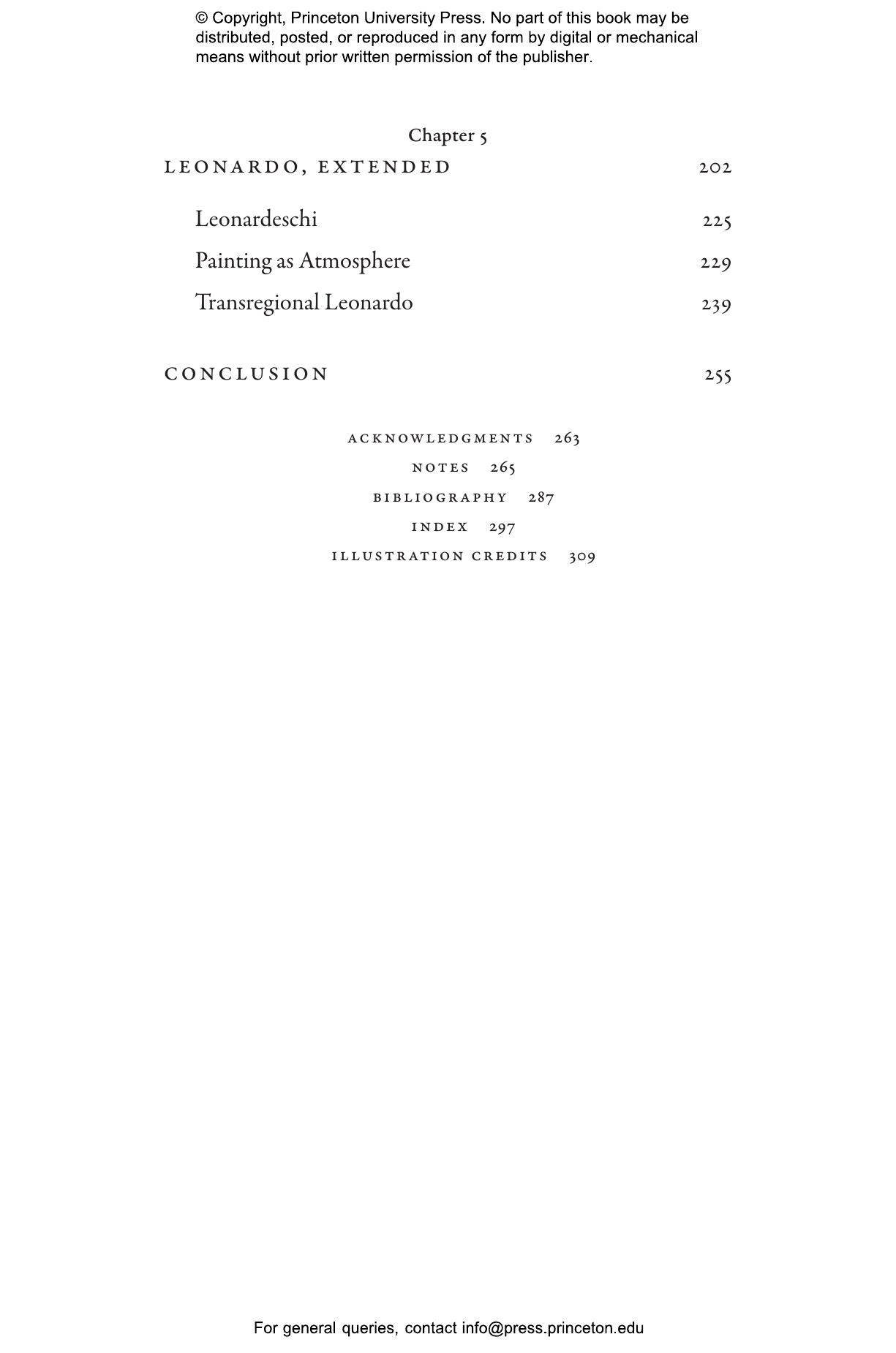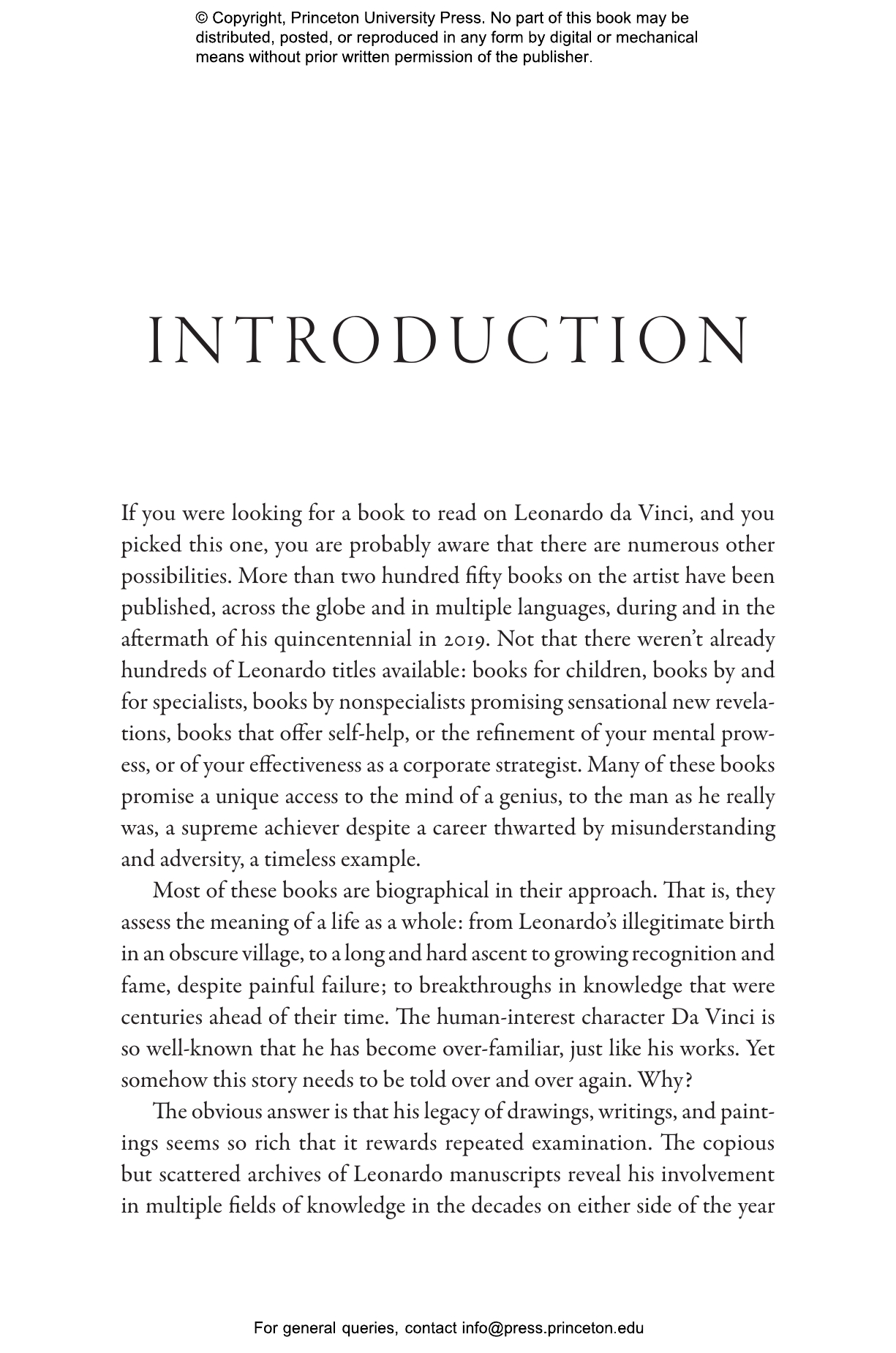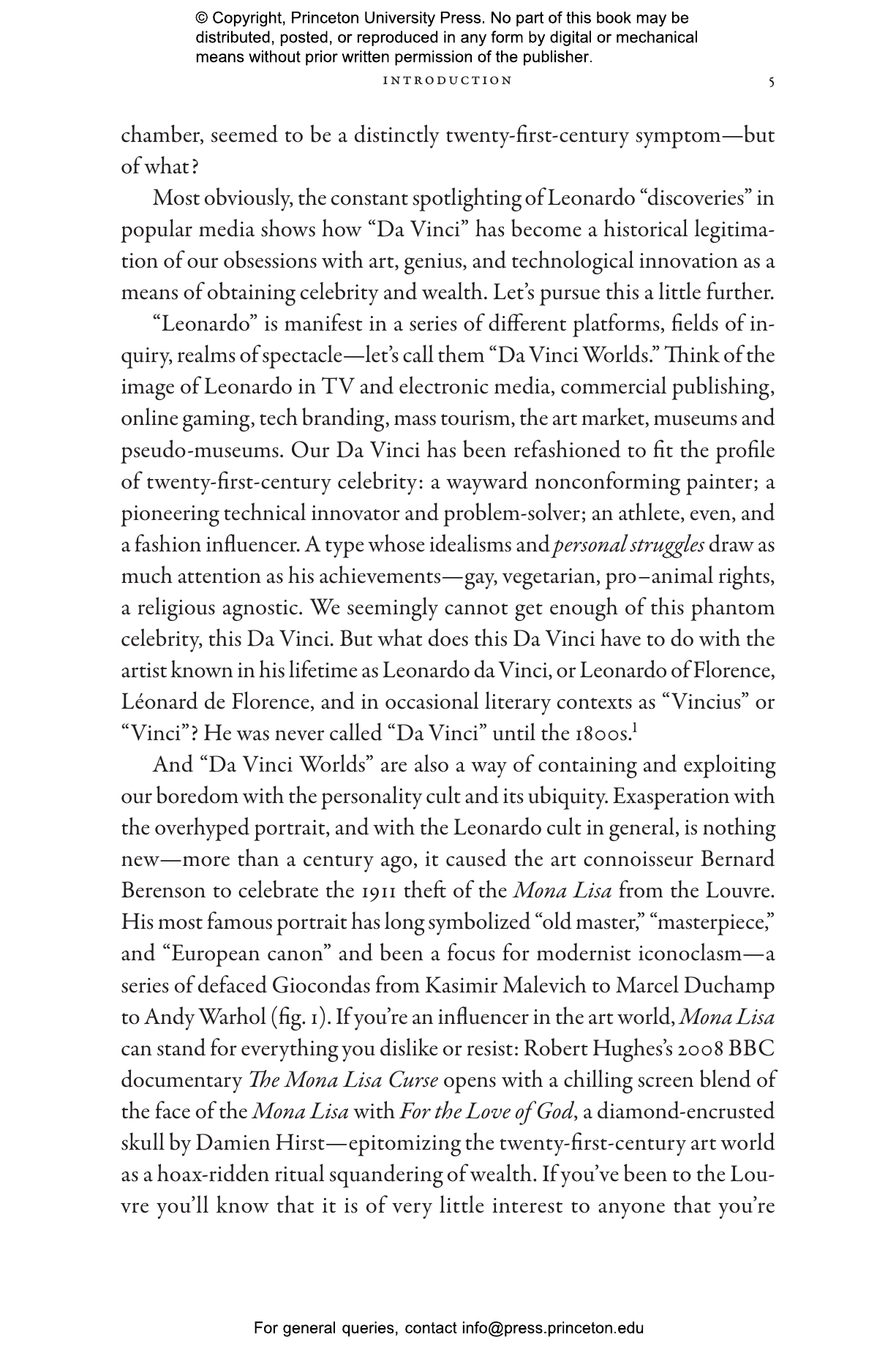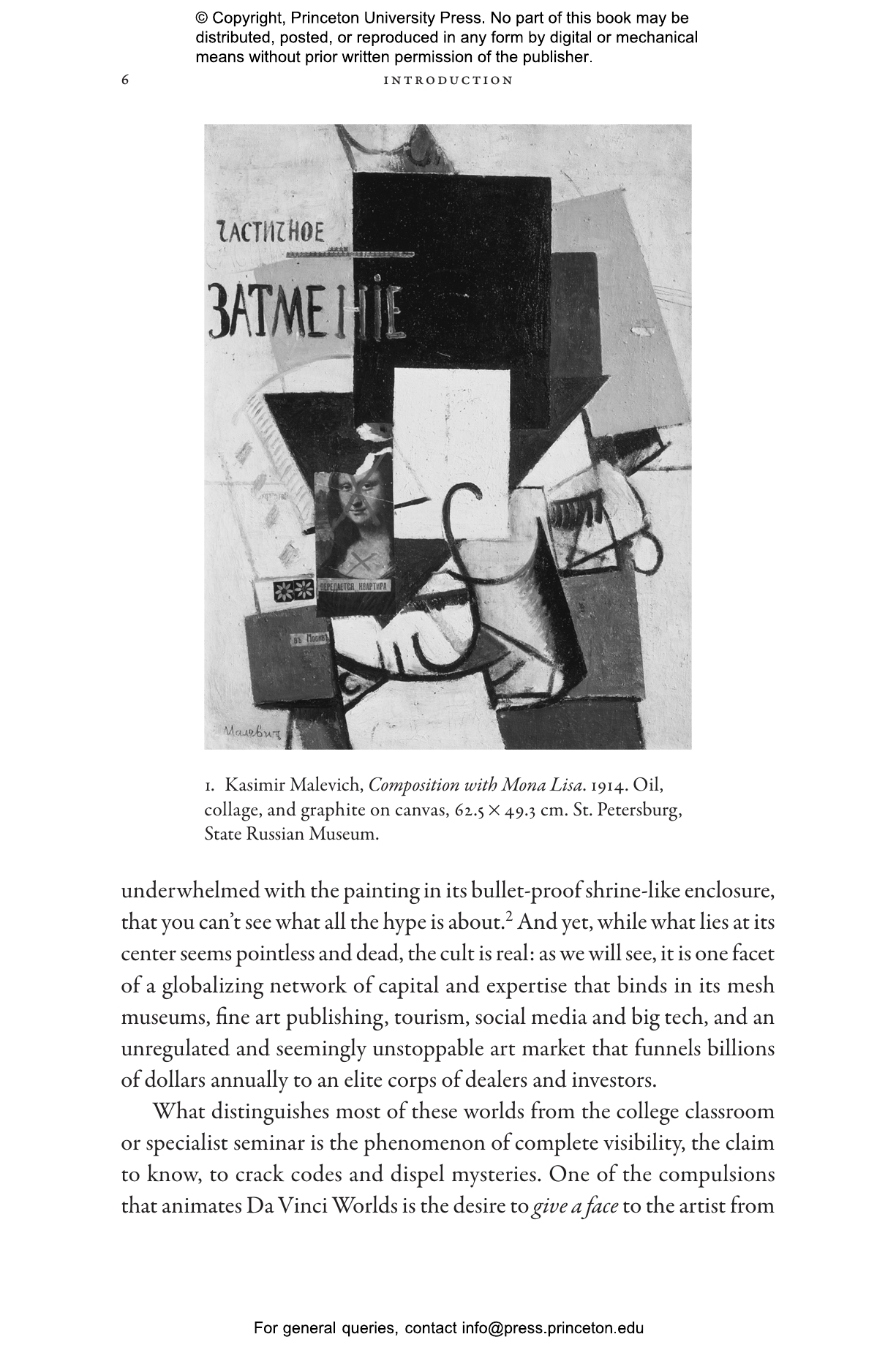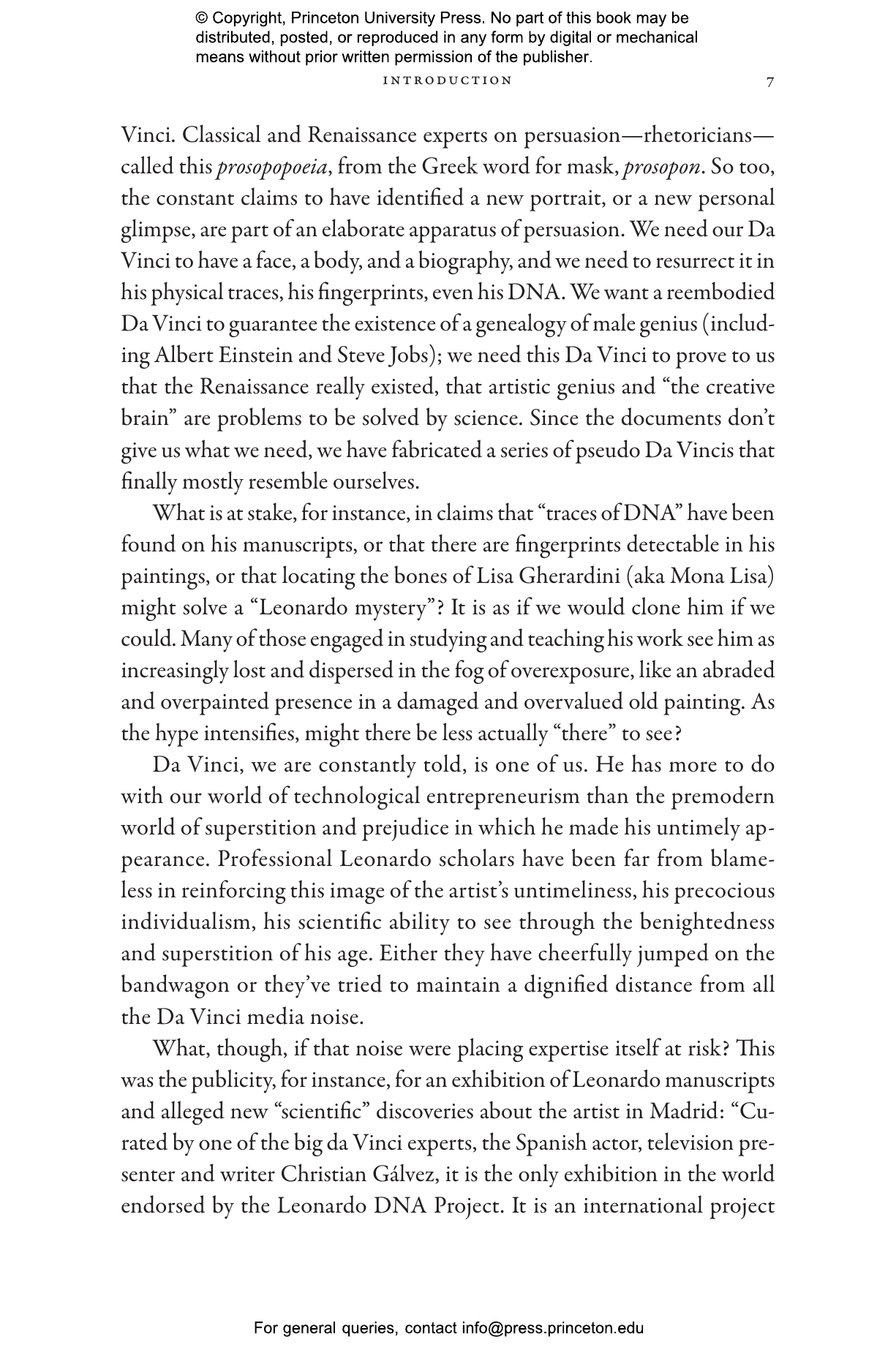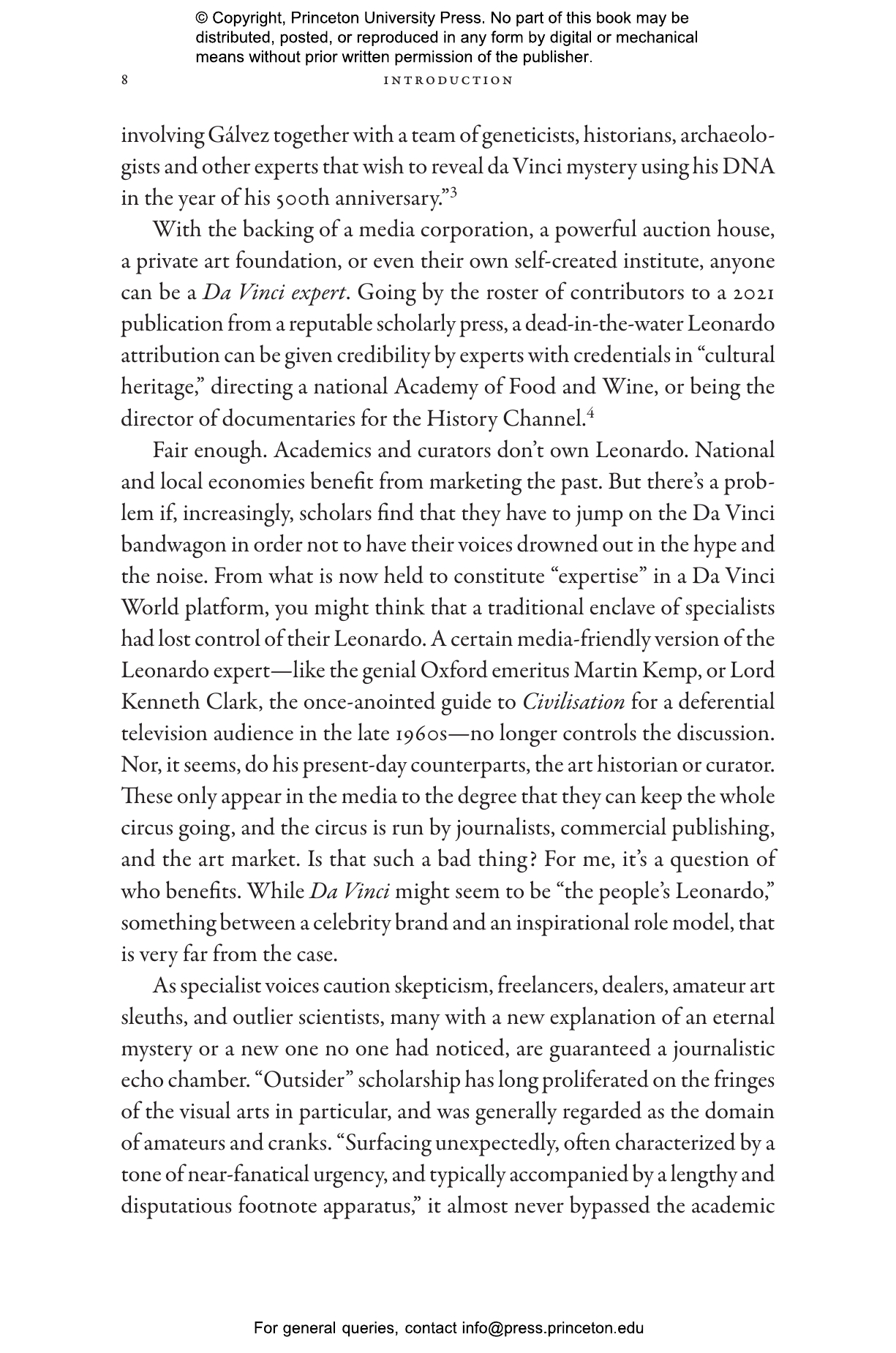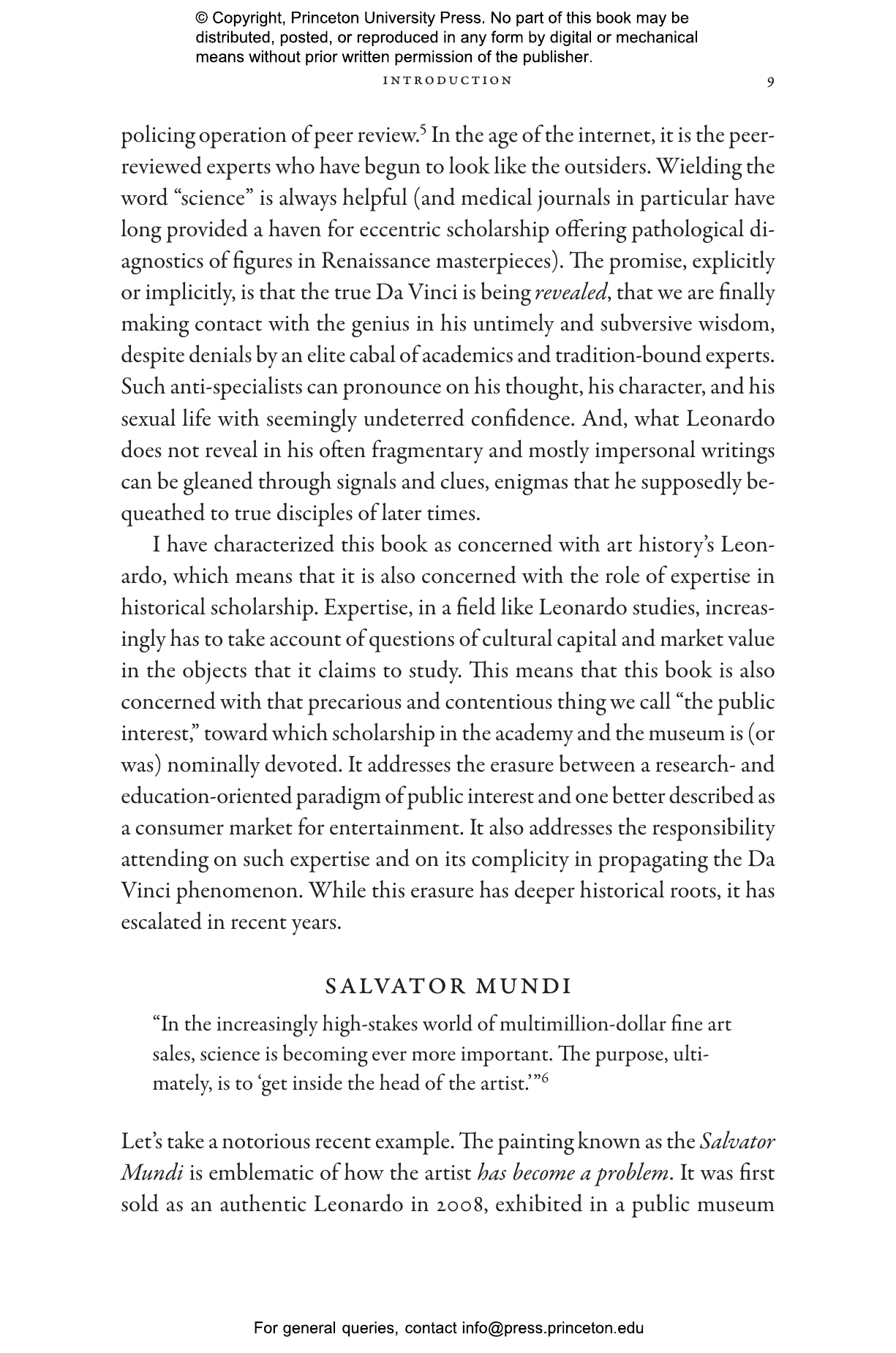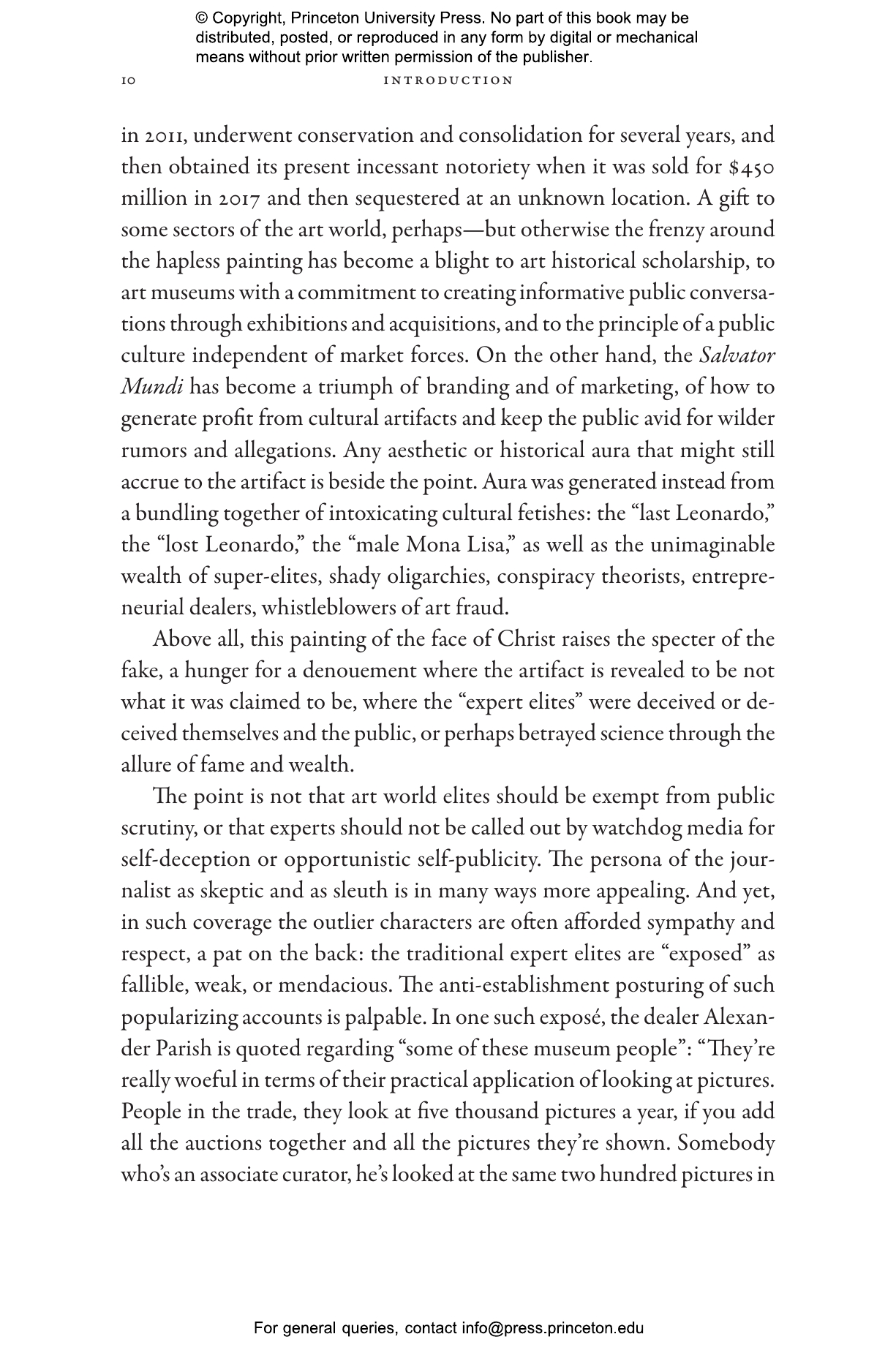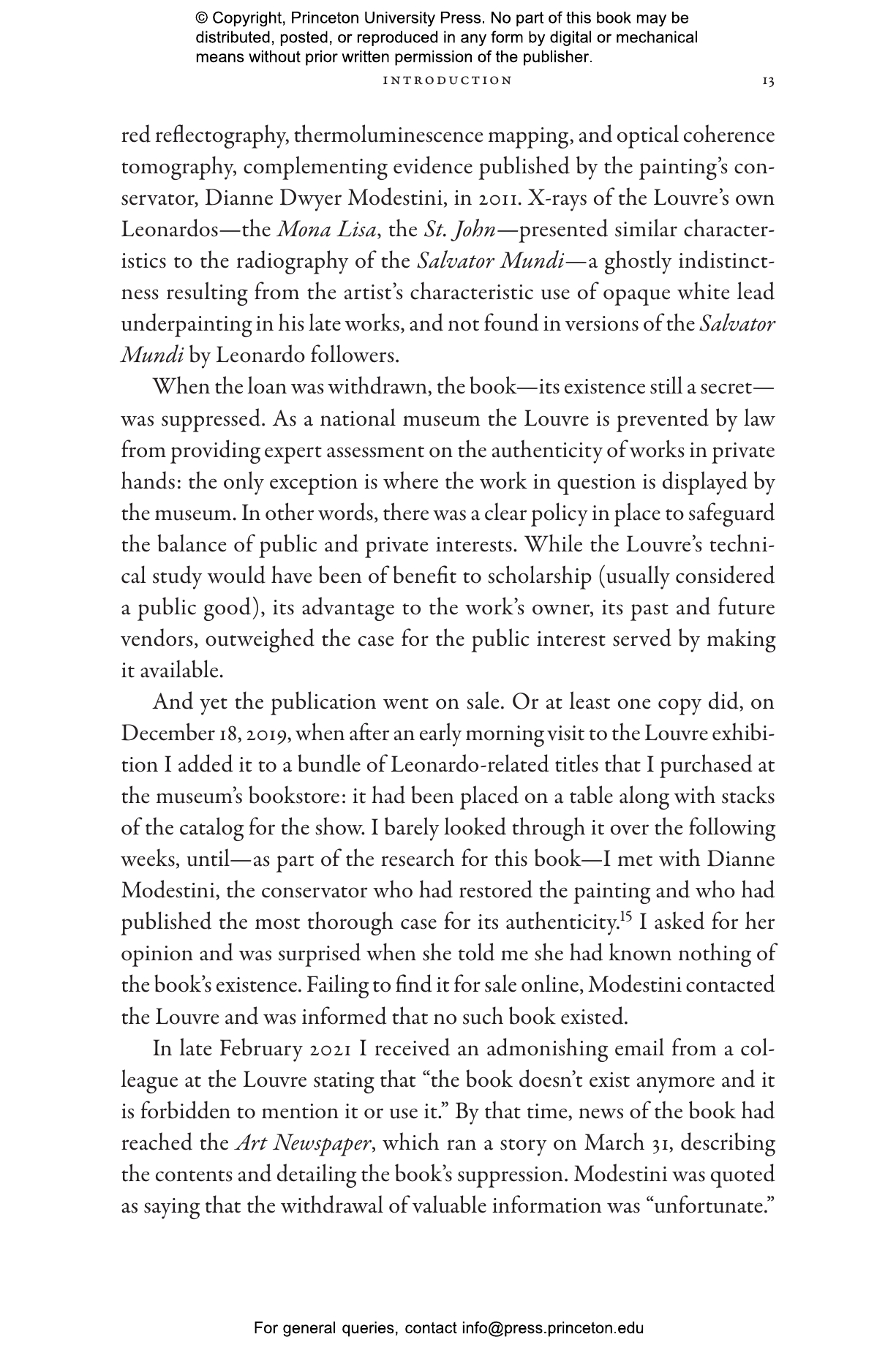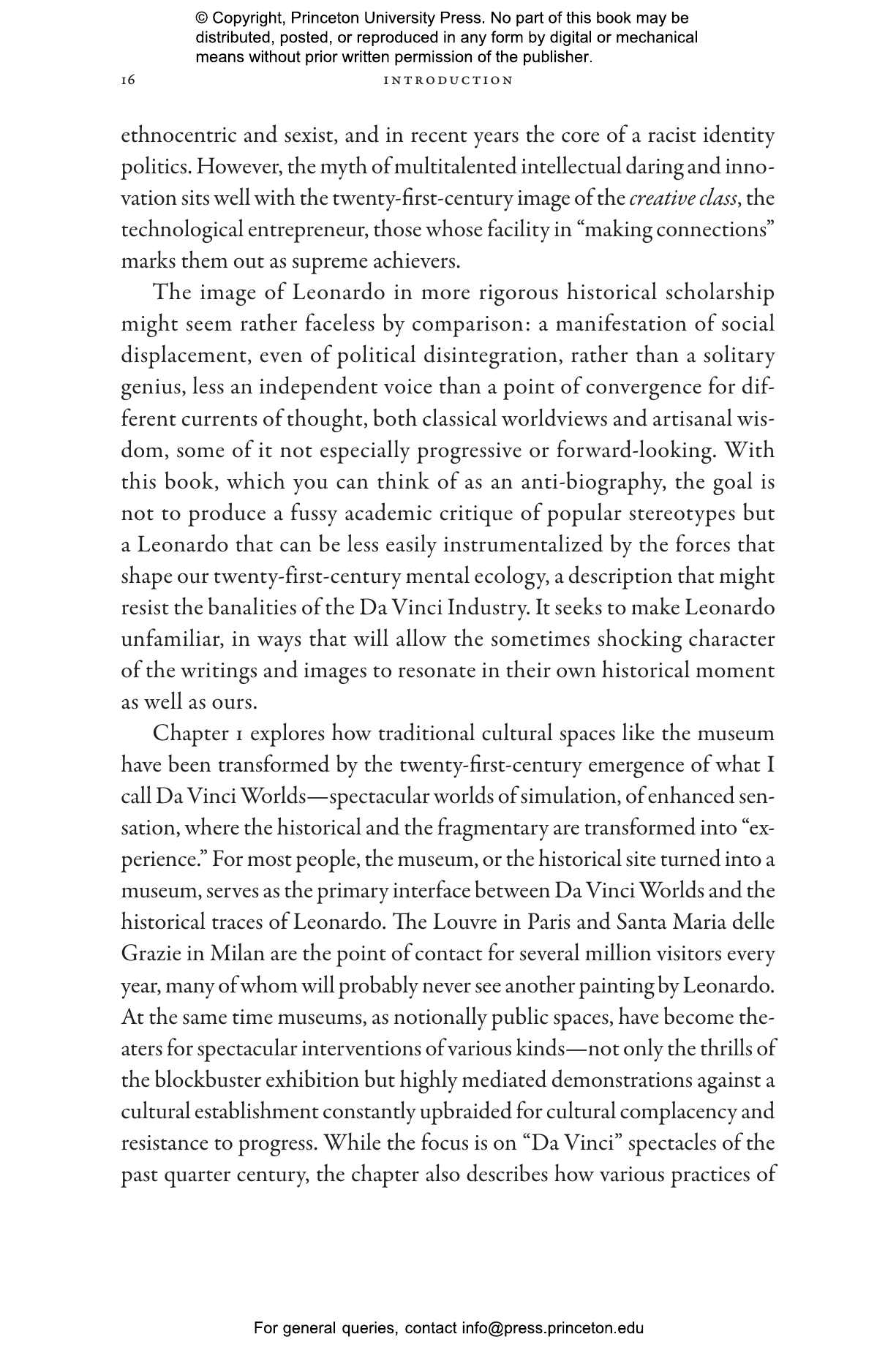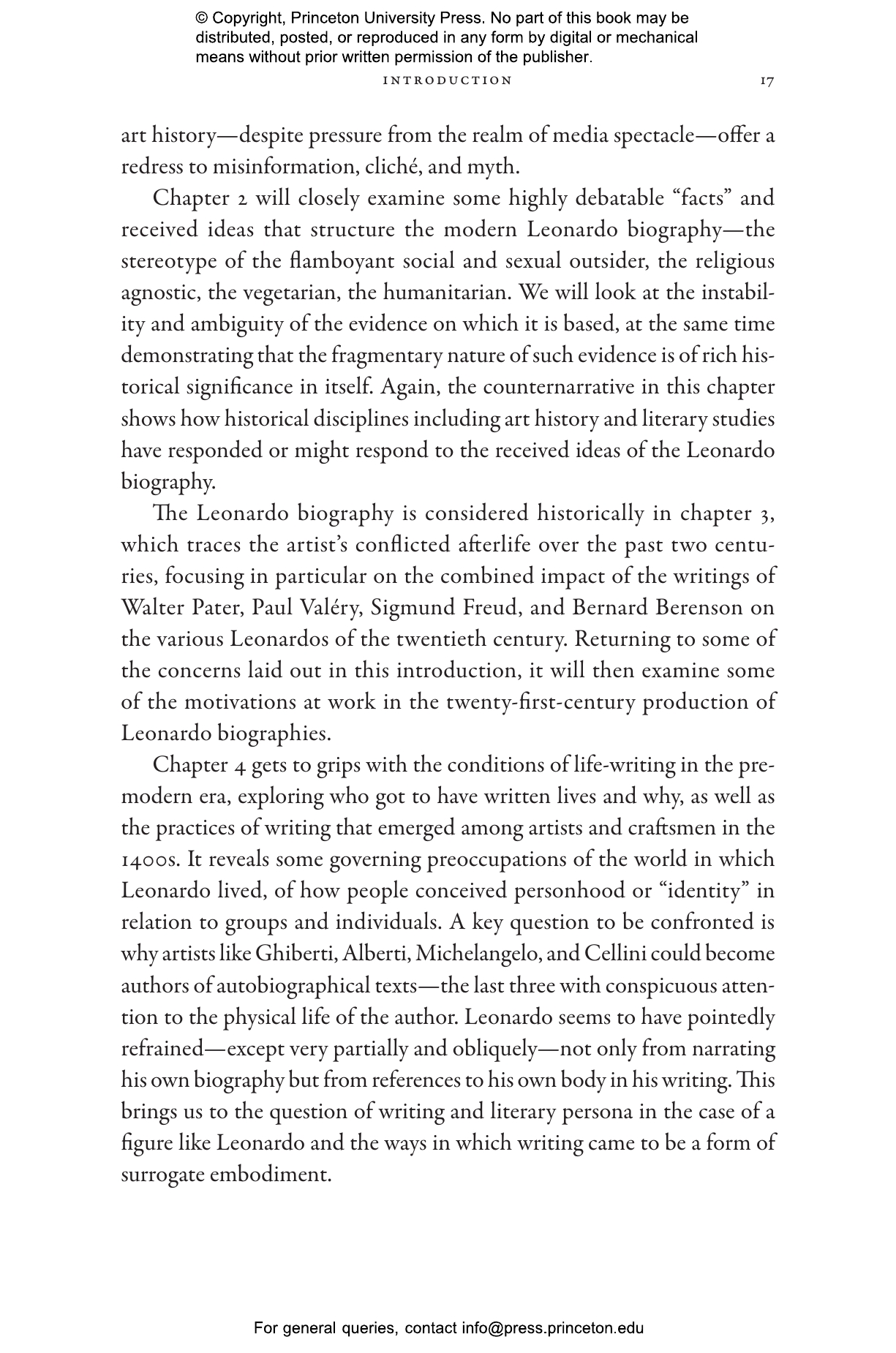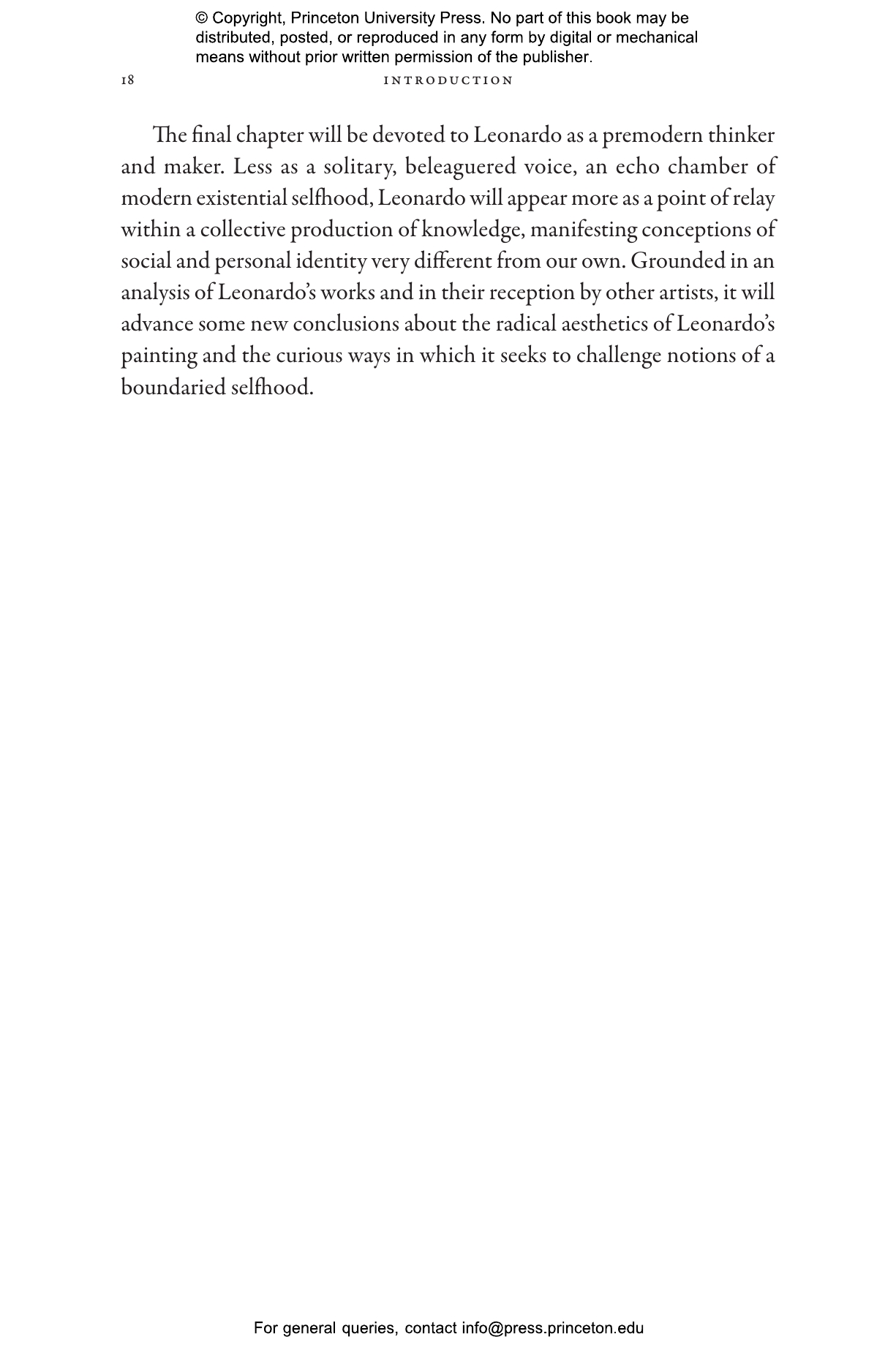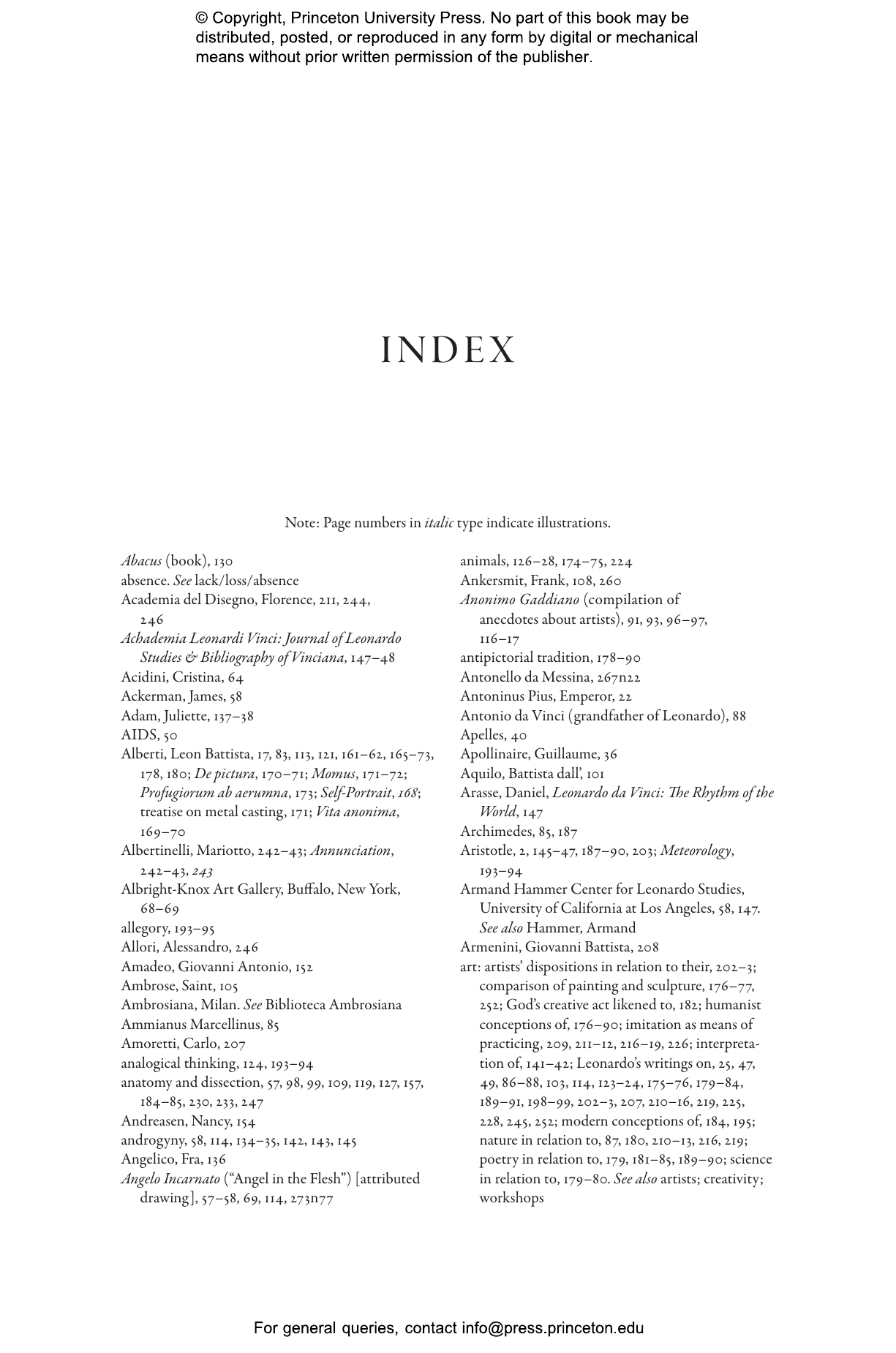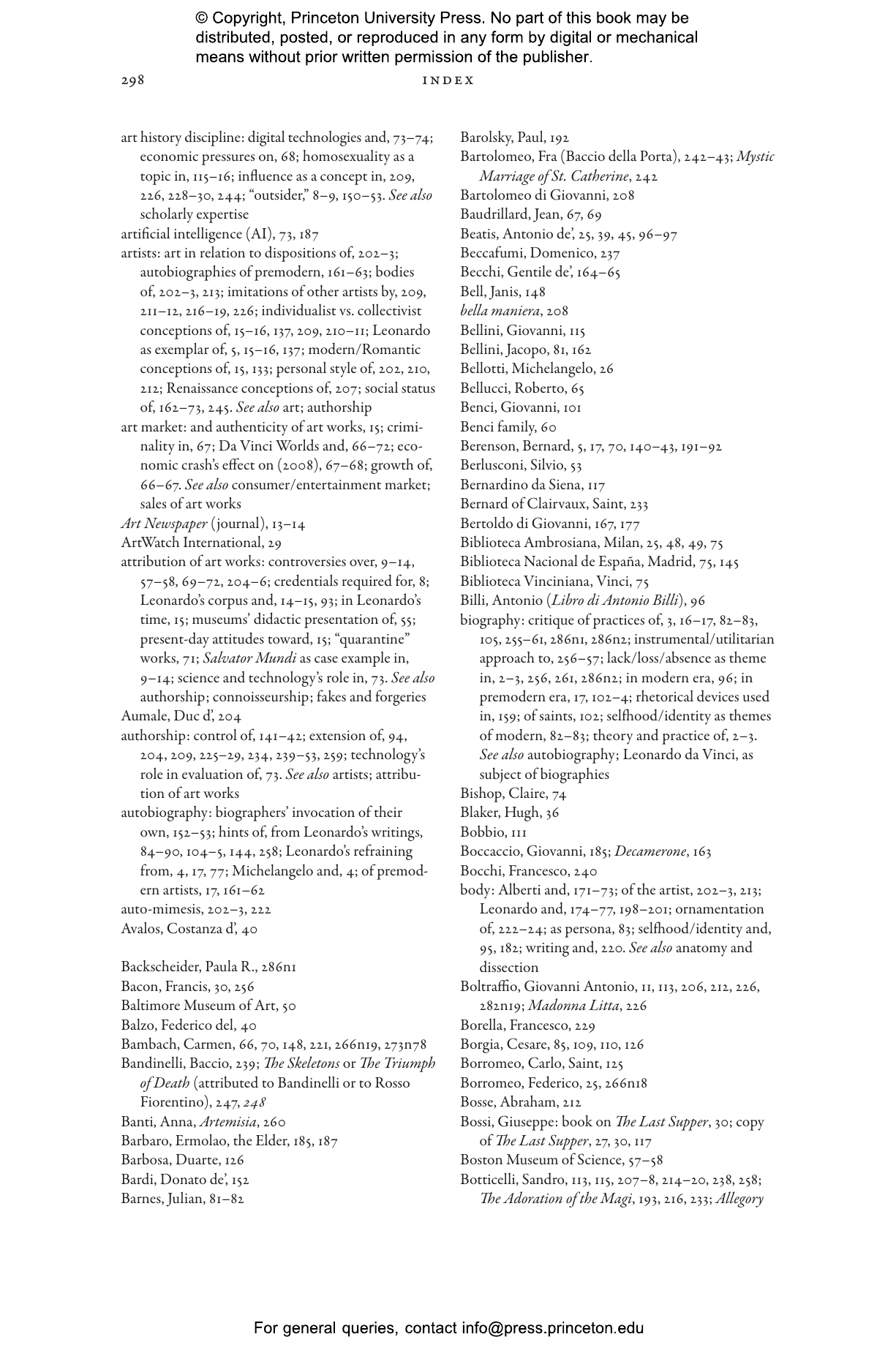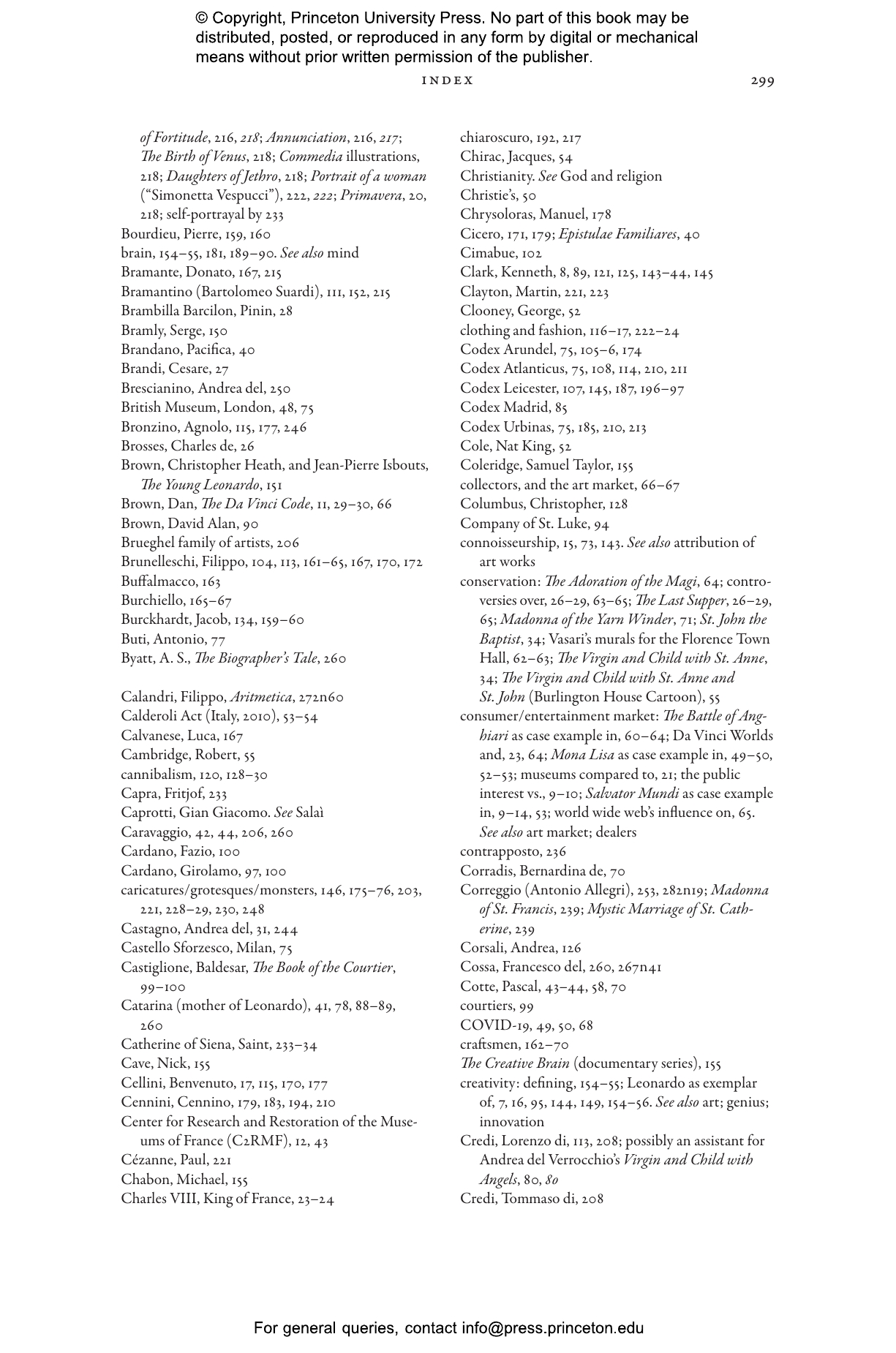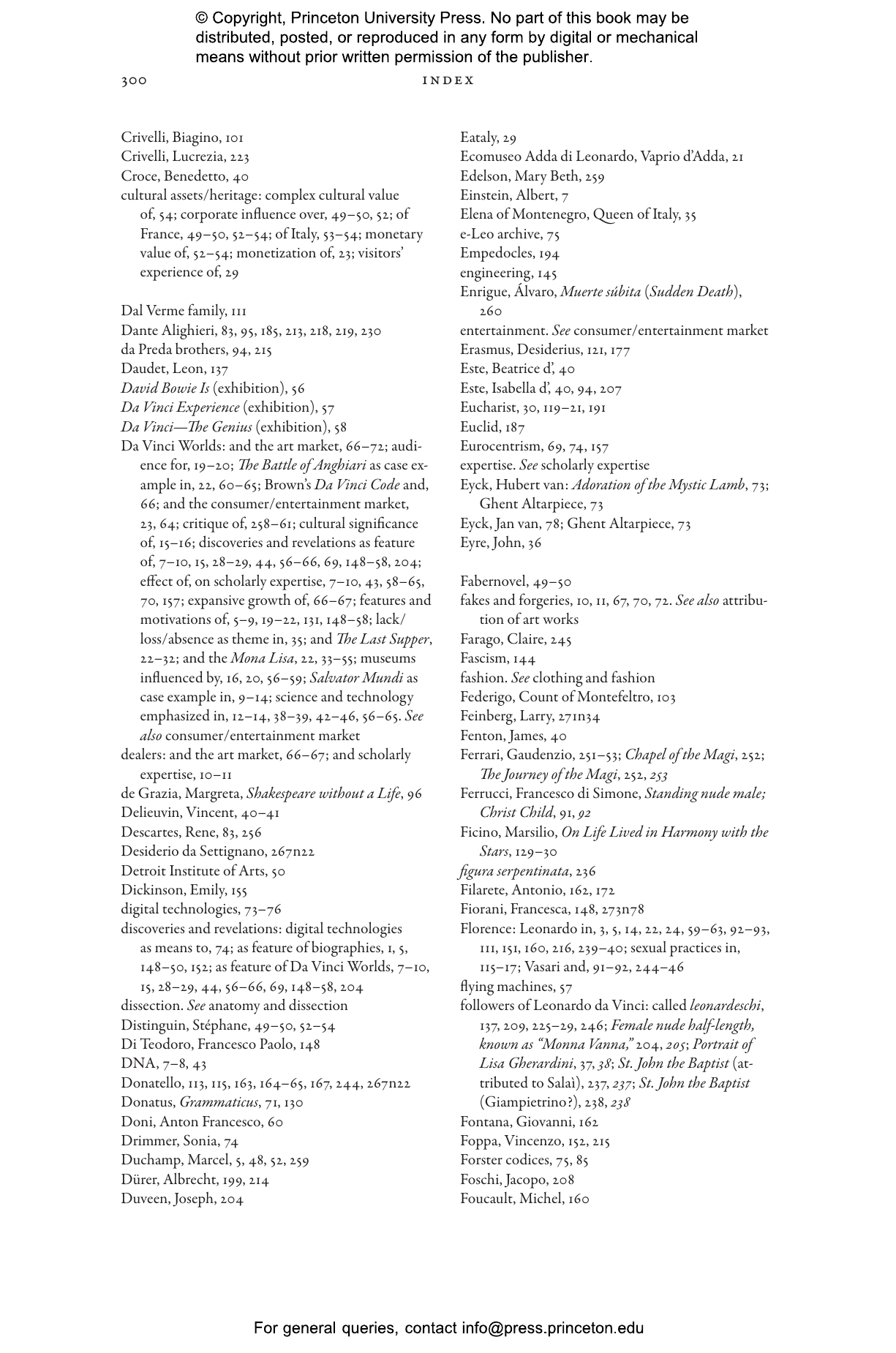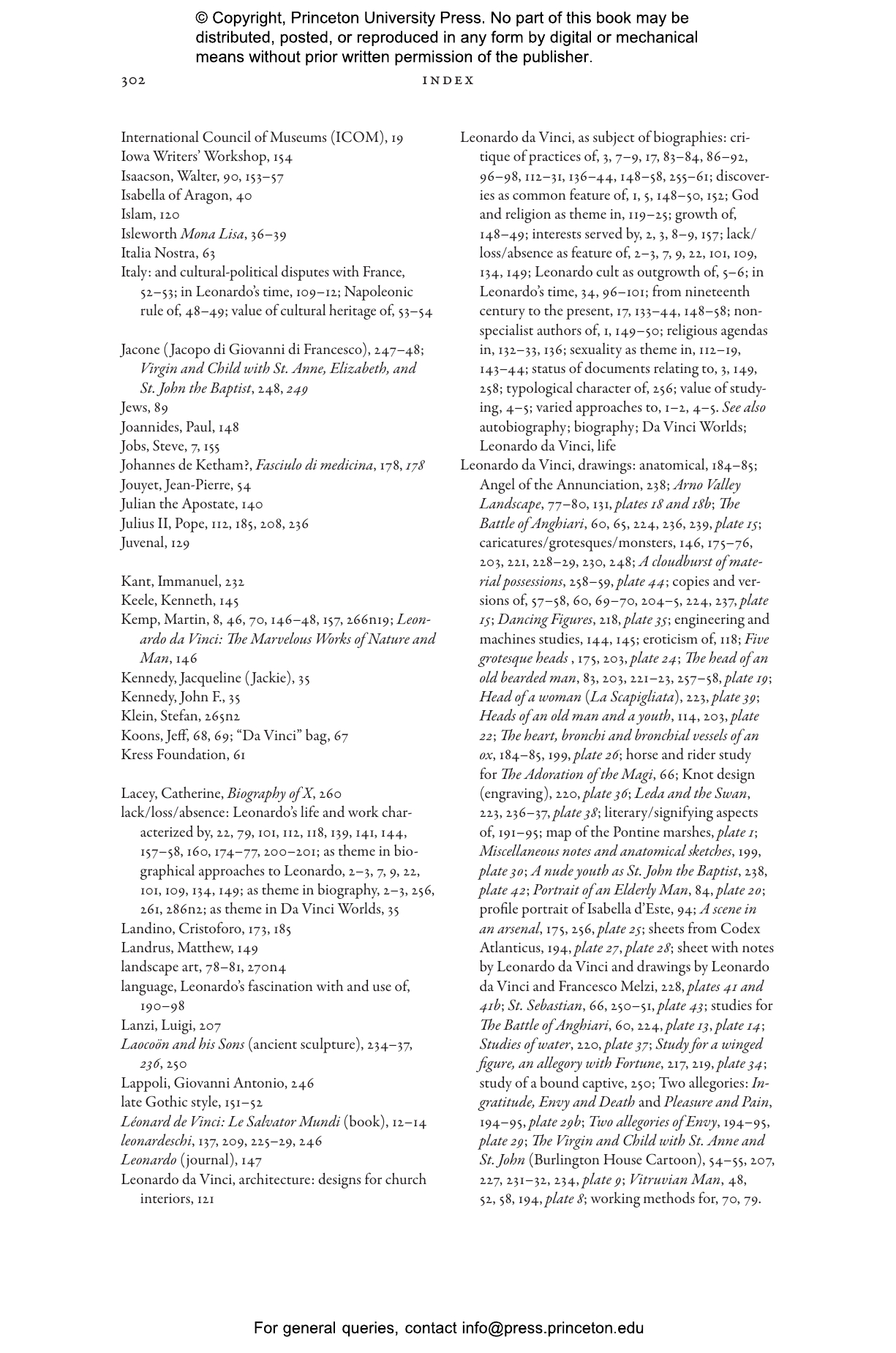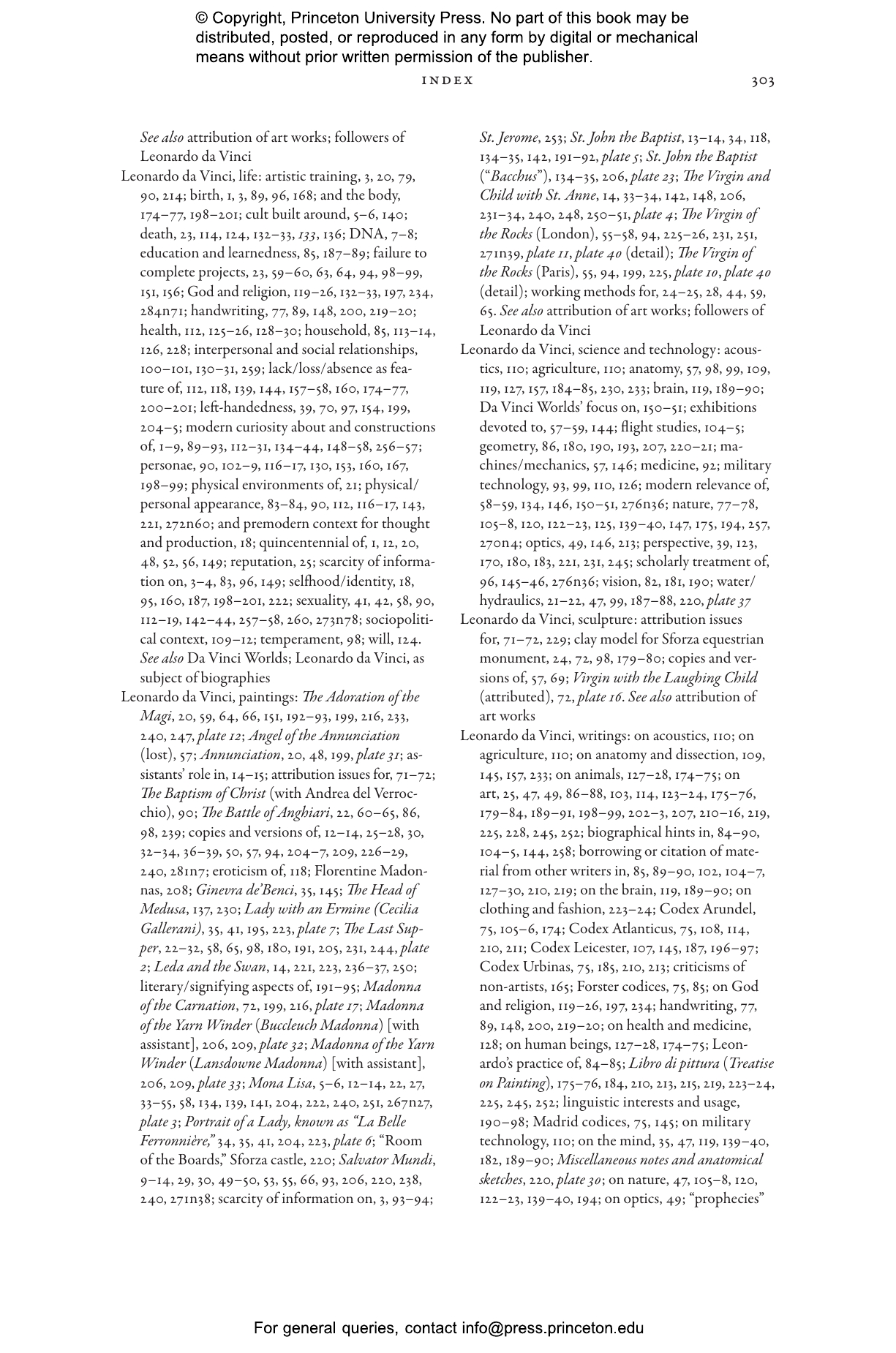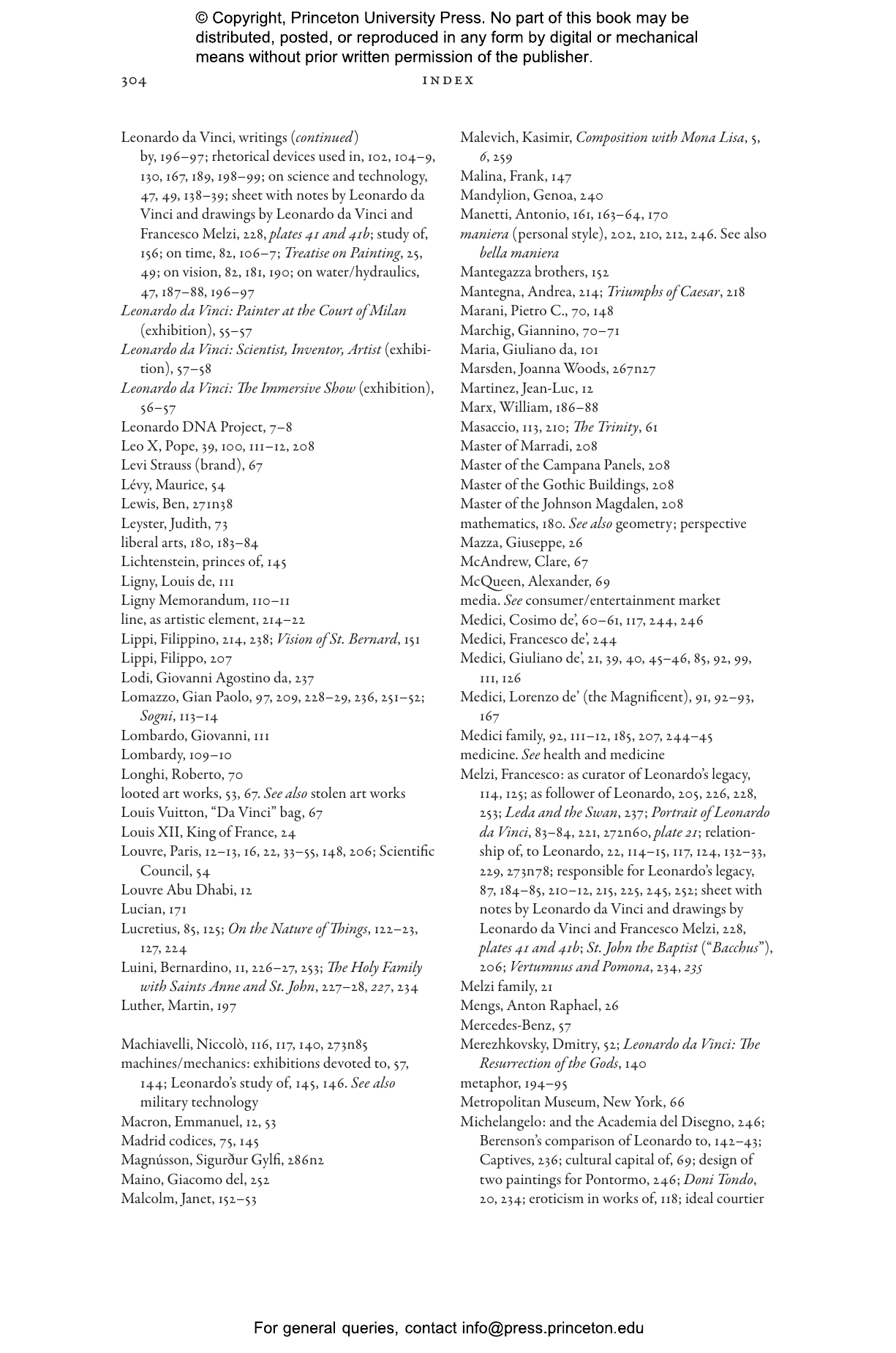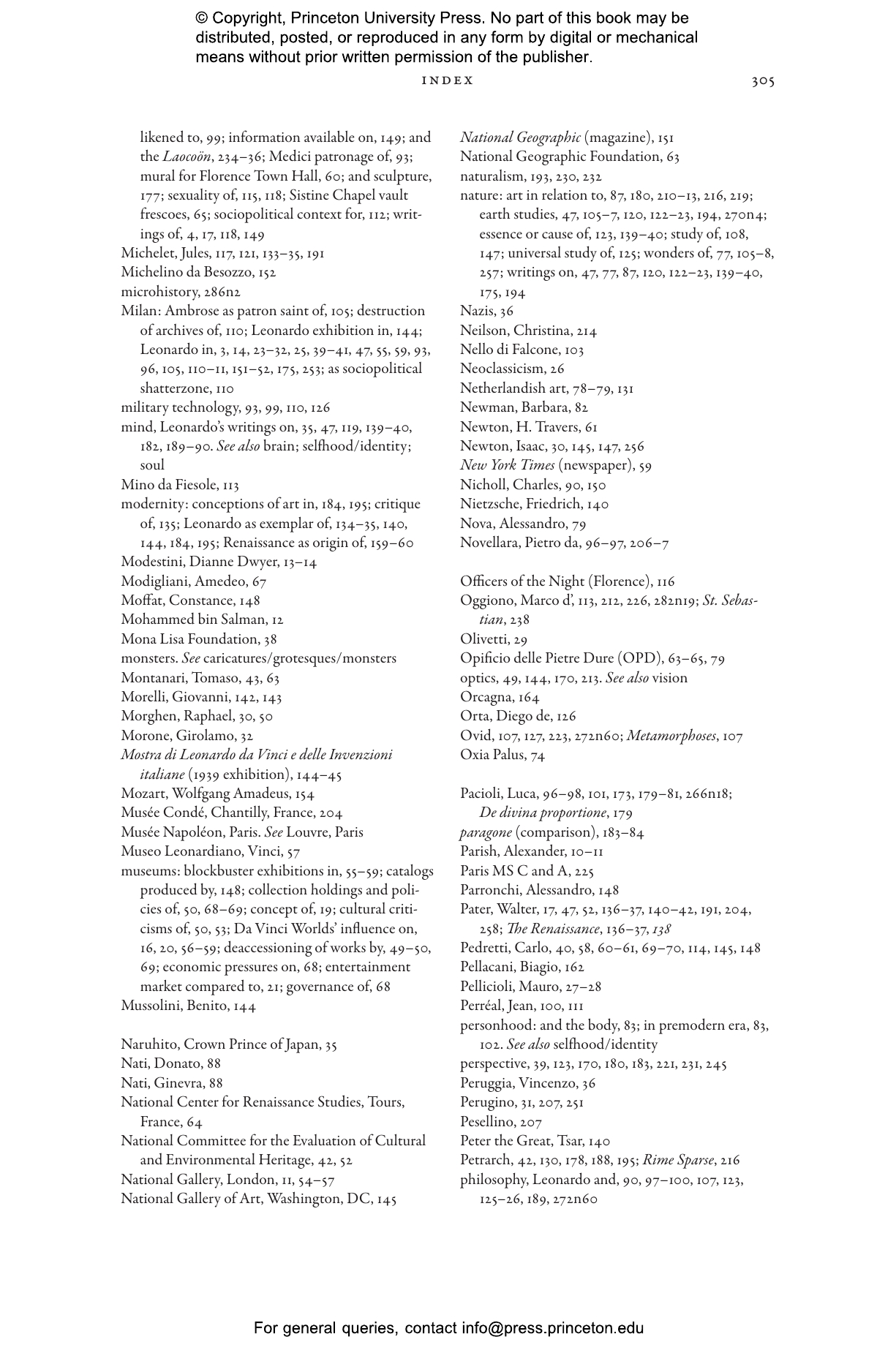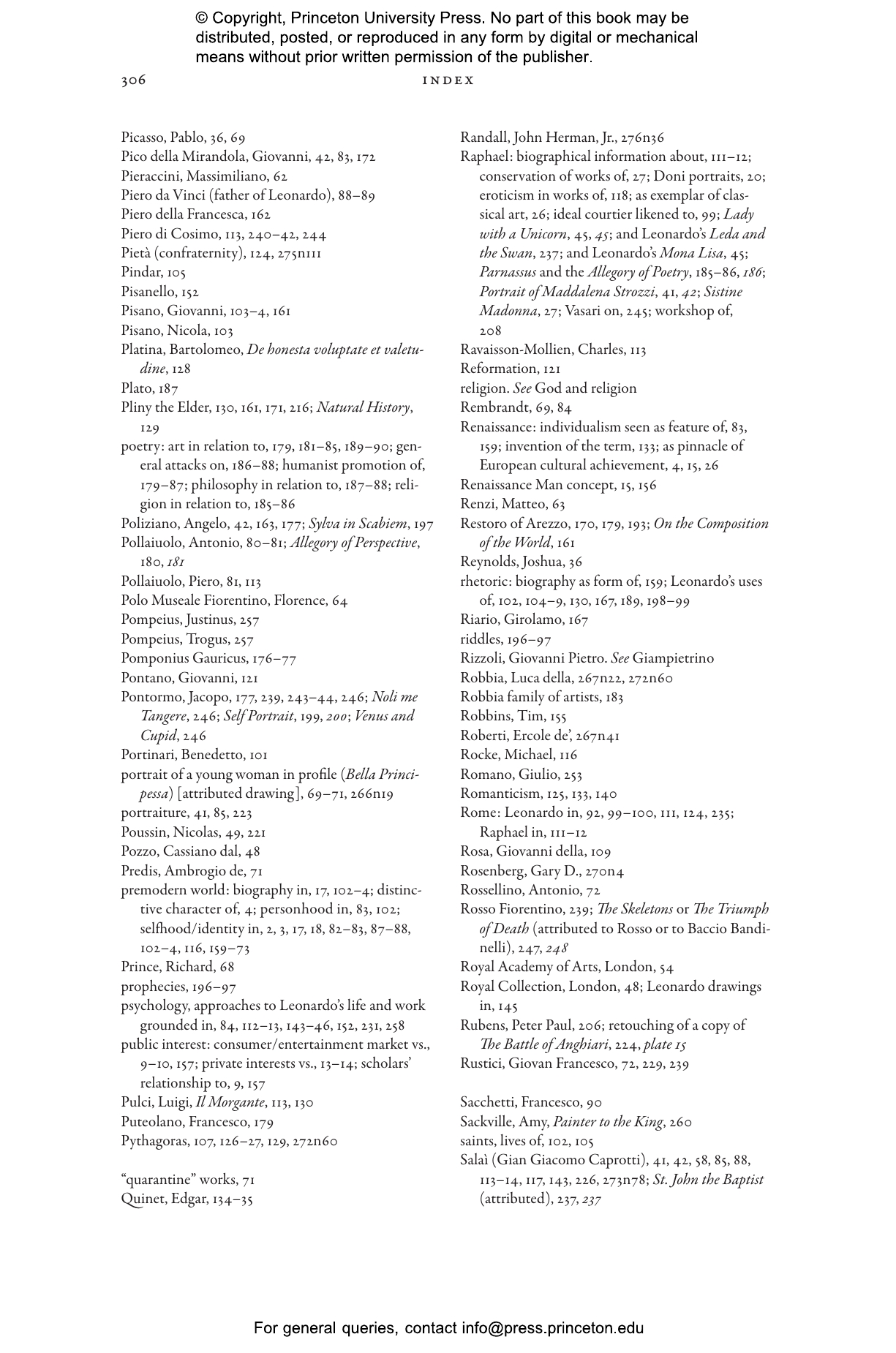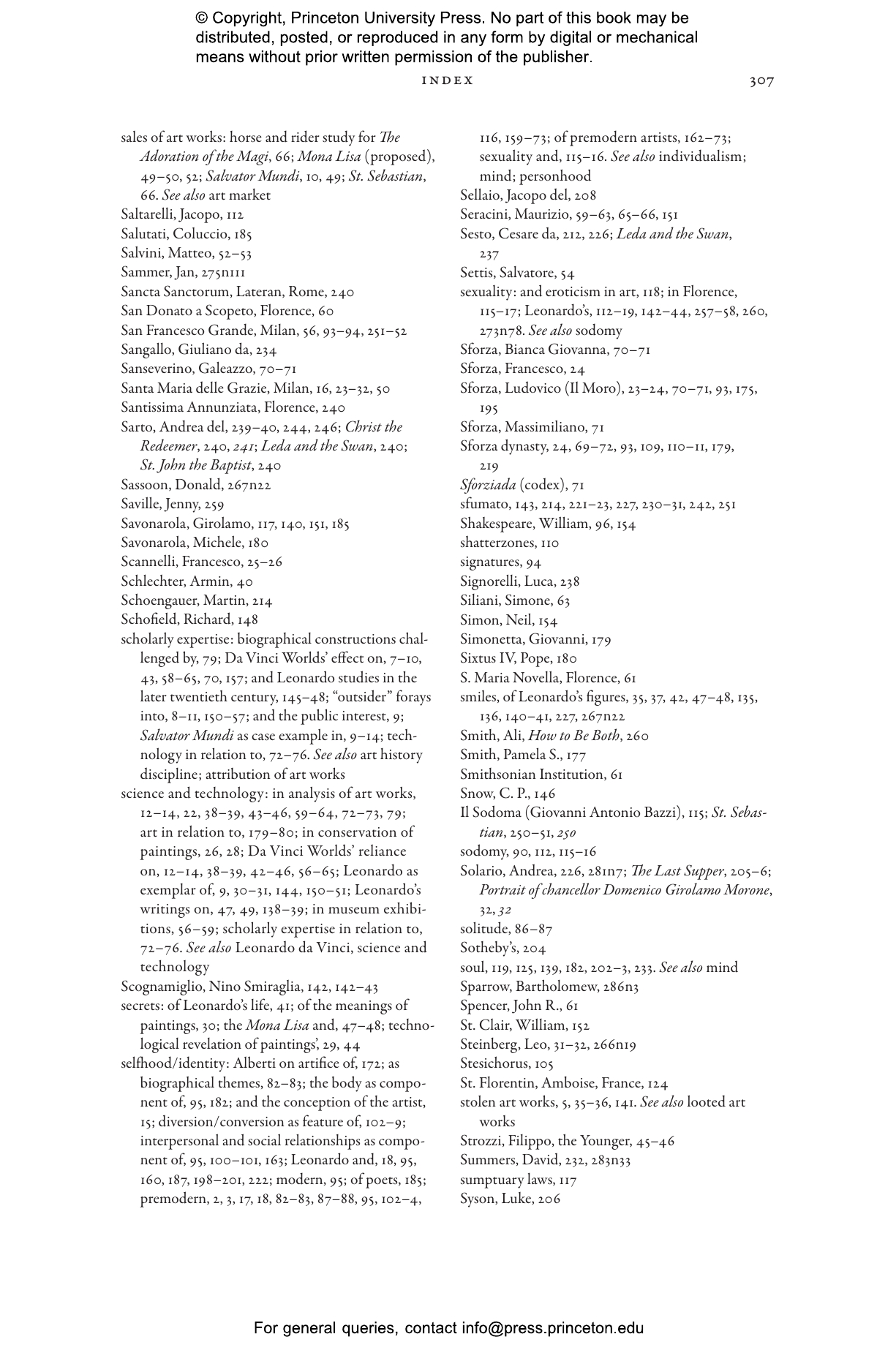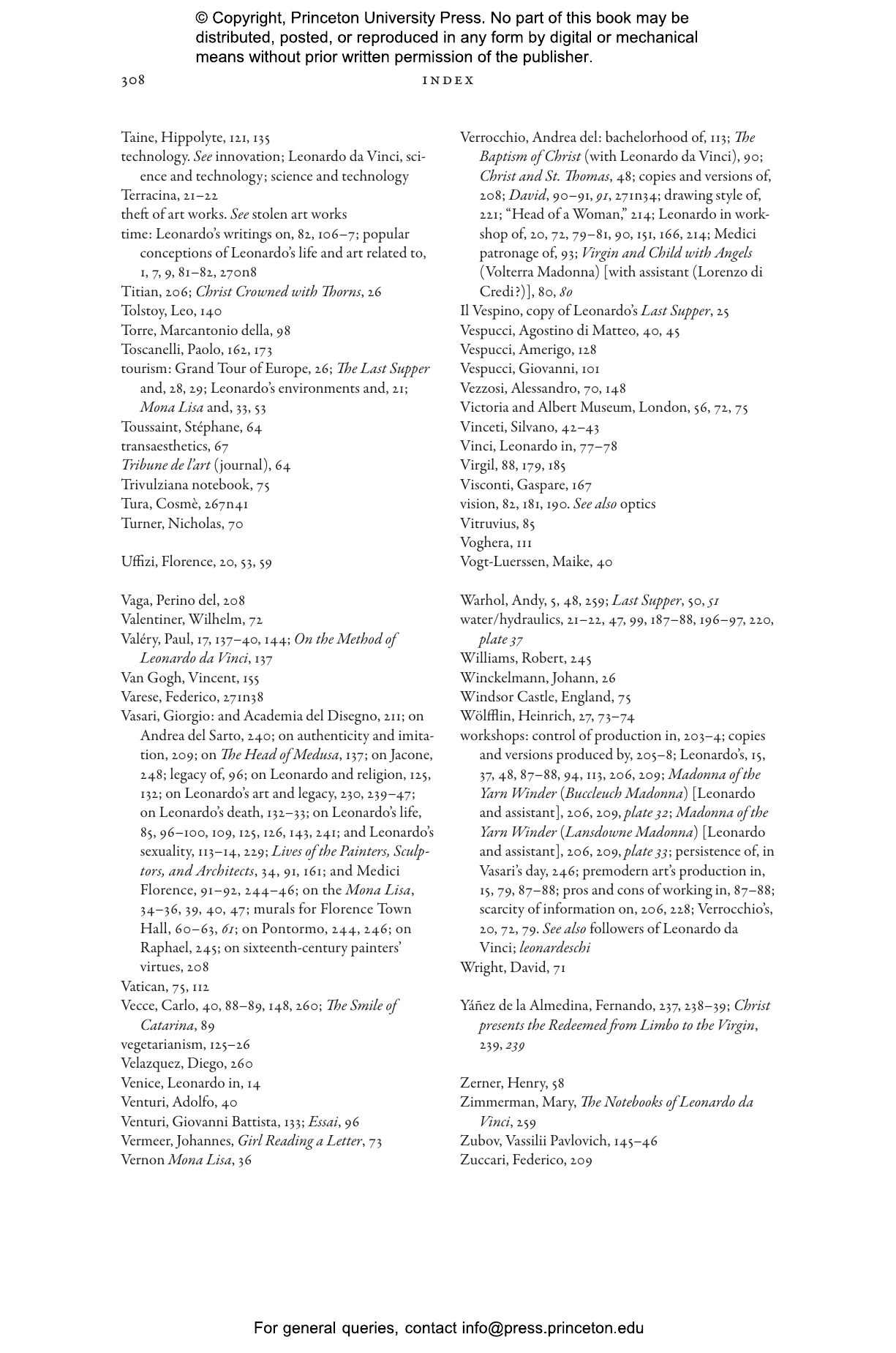Leonardo da Vinci (1452–1519) never signed a painting, and none of his supposed self-portraits can be securely ascribed to his hand. He revealed next to nothing about his life in his extensive writings, yet countless pages have been written about him that assign him an identity: genius, entrepreneur, celebrity artist, outsider. Addressing the ethical stakes involved in studying past lives, Stephen J. Campbell shows how this invented Leonardo has invited speculation from figures ranging from art dealers and curators to scholars, scientists, and biographers, many of whom have filled in the gaps of what can be known of Leonardo’s life with claims to decode secrets, reveal mysteries of a vanished past, or discover lost masterpieces of spectacular value.
In this original and provocative book, Campbell examines the strangeness of Leonardo’s words and works, and the distinctive premodern world of artisans and thinkers from which he emerged. Far from being a solitary genius living ahead of his time, Leonardo inhabited a vibrant network of artistic, technological, and literary exchange. By investigating the politics and cultural tensions of the era as well as the most recent scholarship on Leonardo’s contemporaries, workshop, and writings, Campbell places Leonardo back into the milieu that shaped him and was shaped by him. He shows that it is in the gaps and contradictions of what we know of Leonardo’s life that a less familiar and far more historically significant figure appears.
Stephen J. Campbell is the Henry and Elizabeth Wiesenfeld Professor in the Department of the History of Art at Johns Hopkins University. His books include Andrea Mantegna: Humanist Aesthetics, Faith, and the Force of Images and The Endless Periphery: Toward a Geopolitics of Art in Lorenzo Lotto’s Italy.
"[An] erudite study. . . . buttressed by scrupulous research and extensive knowledge of his subject, [Leonardo da Vinci] is a thought-provoking reassessment of an artistic giant and his legacy."—Publishers Weekly
"Perceptive and authoritative…. [Leonardo da Vinci is] a vigorous meditation on life-writing and one artist’s reality."—Kirkus Reviews
“In this rich and fascinating metahistory, Campbell asks what can be truly known about the past, even regarding a figure as well studied as Leonardo. This book is an important contribution to early modern studies in the visual arts.”—Andrew Butterfield, author of The Sculptures of Andrea del Verrocchio
“In this important book, Campbell presents a Leonardo da Vinci refreshingly distinct from modern perceptions and commodification. Scrutinizing commonly accepted ‘facts’ about Leonardo, he offers a more nuanced view—one that both complicates and enriches our understanding.”—Ross King, author of Brunelleschi’s Dome: How a Renaissance Genius Reinvented Architecture
“In this bold, eye-opening, and necessary book, Stephen Campbell demonstrates the fundamental role of ethics and expertise in the face of the money fueled ‘Da Vinci Worlds’ that have increasingly infiltrated the presentation of Renaissance art. This ‘antibiography’ foregrounds the gaps in our knowledge about Leonardo the individual, but constructs a more complex, nuanced, truer portrait of this figure as the product of networks of thinking and making, part of a workshop, a society, a bigger conversation. Essential reading.”—Jill Burke, author of How to Be a Renaissance Woman: The Untold History of Beauty and Female Creativity
“This is a remarkable work of historical, visual, and literary criticism, packed with political, social, and even ecological insight. Stephen Campbell takes seriously Leonardo’s insistence on the marvelous singularities of nature and his rejection of abbreviations and synthesis, providing a defense of the artist against the utilitarianism of our times. By recovering the sense of unknowability in the face of nature that set Leonardo apart, Campbell has resisted the conventional biography.”—Elizabeth Cropper, author of The Domenichino Affair: Novelty, Imitation, and Theft in Seventeenth-Century Rome
“A fascinating and brilliant sifting through the hydra-headed fictions, distortions, myths, and legends that have accrued to Leonardo. Rather than a solitary genius ‘ahead of his time,’ Campbell shows us just how much Leonardo was of his time, entangled in an extensive world of assistants, colleagues, followers, and imitators.”—William E. Wallace, author of Michelangelo, God’s Architect


